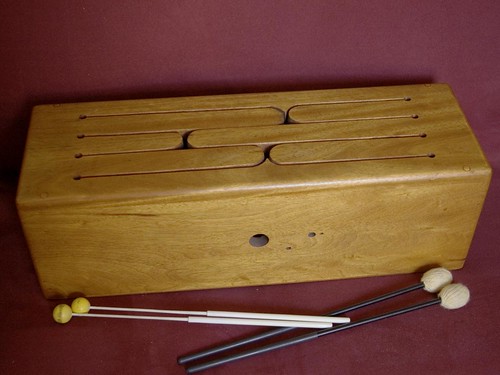A post from four and a half years ago that I'm bumping to the top because it interests me. It's about physical movement; more specifically, about the need to practice transitions between physical movements. I'm particularly interested in the physical movements required to make music, or to dance.Just yesterday I reported research indicating that both birds and human infants devote considerable time to learning how to switch between one sound and another. Here’s a passage from the abstract published in Nature:
We find a common, stepwise pattern of acquiring vocal transitions across species. In our first study, juvenile zebra finches were trained to perform one song and then the training target was altered, prompting the birds to swap syllable order, or insert a new syllable into a string. All birds solved these permutation tasks in a series of steps, gradually approximating the target sequence by acquiring new pairwise syllable transitions, sometimes too slowly to accomplish the task fully. … The babbling of pre-lingual human infants showed a similar pattern: instead of a single developmental shift from reduplicated to variegated babbling (that is, from repetitive to diverse sequences), we observed multiple shifts, where each new syllable type slowly acquired a diversity of pairwise transitions, asynchronously over development. Collectively, these results point to a common generative process that is conserved across species, suggesting that the long-noted gap between perceptual versus motor combinatorial capabilities in human infants may arise partly from the challenges in constructing new pairwise vocal transitions.
Compare that to this passage in an article by David Hays, The Evolution of Expressive Culture:
Balanchine's working career was long (Taper 1963/1984): born in 1904, he began making ballets in Russia in 1920, and made ballets in New York until 1982; he died in 1983. During that time, techniques for training the body advanced remarkably: In athletics (Mandell 1984), gymnastics, circus, and also in dance. Around 1900, I have heard, ballet dancers took several musical beats to move into a position, which they then held in tableau. Taper (p. 360) quotes Balanchine: "If present-day critics and audiences could actually see Apollo as it was performed in 1928, 'they would laugh their heads off at how it used to be.'" At the peak of his career, Balanchine made dances in which there was no time between steps for preparation; other choreographers still allowed a pause between movements so that the dancer could shift from the end pose of one movement to the start pose of the next, but not he. Reynolds (p. 98) quotes Maria Tallchief on Firebird (1949): "it was practically impossible. The variation contained many low, fast jumps, near the floor, lots of quick footwork, sudden changes of direction, off-balance turns, turns from pointe to pointe, turned-in, turned-out positions, one after another. It was another way of moving . . . There was no time."
There’s nothing in there about the practice required to learn these smooth pose-to-pose transitions but making such transitions is clearly a problem–not the least because they involve keeping the entire body in balance–and it took time for dancers to arrive at practice regimes that allowed for such transitions.
I have had some experience with the transition problem in teaching myself to play a tongue drum, which I discuss a bit in this post on free drumming.
Let’s say I’m learning some particular pattern, one that involves four strokes, left-hand right-hand left right, using, say, three particular keys on the drum, which each key is given a different letter identification, thus:
1) L(A) R(B) L(C) R(B) . . .
I begin by playing the pattern slowly and gradually pick up the pace. Now I decide that I want to hit the E key rather than the B key with the right hand. So I practice that:
2) L(A) R(E) L(C) R(E) . . .
That comes up to speed very quickly because the pattern of alternation between hands remains the same. All that’s changed is the target for the right hand stroke.
Imagine, now, that I want to alternate between patterns 1 and 2, thus:
L(A) R(B) L(C) R(B) L(A) R(E) L(C) R(E) . . .
Getting that to happen will not be easy. I’m going to have to start it slow and consciously think about the transition. As the transition becomes more comfortable I can pick up speed and, at some point, I will no longer have to think about the transition. It will happen smoothly and easily, without thought.
What’s going on? I don’t know, of course. The most obvious suggestion, however, is that, when one has to make a transition from one pattern to another, you have to (mentally) prepare the second transition while the first is being executed. And each pairwise transition requires different preparation, so each must be learning individually.
I would further speculate that this is a general problem in motor learning.

"I’m going to have to start it slow and consciously think about the transition."
ReplyDelete"This technique of magnifying the pause was utilized in Dance/Movement Therapy treatment
with ADHD children at this author's fieldwork placement. The technique, or game, was called "Stop and Think". In this game, hula hoops of several colors were placed on the floor to create a hopscotch-like floor plan. The child's task was to hop and jump through the floor plan while calling out the colors of the hoops. The children new to the game would impulsively burst into the hopping, and then find themselves landing outside the hoops while not being able to call out colors. The more
experienced children had learned to stand and the start in stillness, and to plan and pace their progression. They had learned alternative phrasing."
Aliza Ivy Shapiro "The movement phrase and its clinical value in dance/ movement therapy. 1999